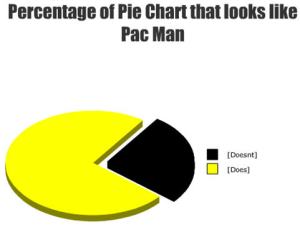2% of gamers not currently playing an MMO said they would willingly pay a subscription fee to do so
3% of gamers are extreme
4% of gamers within the US play games for around 50 hours per week
5% of gamers agree with the statement: “The rumble feature should be removed from all video games
6% of gamers buy virtual goods
7% of gamers are choosing to keep their console and their gaming in the basement of their home.
8% of gamers are addicted
9% of gamers might be addicted to video games
10% of gamers are addicted
11% of gamers own unopened games
12% of gamers demonstrated addictive behavior
13% of gamers play as the default Shepard
14% of gamers plan to buy a tablet instead of a console
15% of gamers exhibit signs that meet the World Health Organization’s criteria for addiction
16% of gamers responded that they play Cafe World
17% of “casual” gamers consider themselves addicted
18% of gamers play as female Shepard
19% of gamers have broken their games console after getting frustrated playing a game
20% of gamers buy virtual goods
21% of gamers who are aware of FarmVille play it daily
22% of gamers reported being stopped by police
23% of gamers feel addicted to video games
24% of gamers reduced their TV watching over the last year
25% of gamers think they may be addicted
26% of gamers said that they believed their driving scares other people
27% of gamers are 45 years old or older
28% of gamers don’t ever check for the availability of DLC
29% of gamers are over 50 years old
30% of gamers have purchased virtual goods
31% of gamers reported running a red light over the past 12 months
32% of gamers chose to honor and respect the names given to characters by developers
33% of gamers say that playing games is their favorite entertainment activity
34% of gamers are women
35% of gamers are parents
36% of gamers that see an in-game advert go on to seek information about the related product
37% of gamers said friends and family relied upon them to stay up-to-date about movies
38% of gamers are female
39% of gamers are female
40% of gamers are women
41% of gamers are women
42% of gamers are female
43% of gamers are women
44% of gamers are female
45% of gamers are women
46% of gamers are female
47% of gamers are female
48% of gamers were female
49% of gamers won’t buy downloadable content
50% of gamers said in-game ads make games more realistic
51% of gamers don’t want 3D consoles
52% of gamers play on iPod, iPhone, or iPad
53% of mobile social gamers are women
54% of gamers ages 2 or older play online games
55% of gamers play on portable devices
56% of gamers today play to socialize and meet new people
57% of gamers admit that they have sex on a regular basis
58% of gamers are male
59% of gamers play with friends
60% of gamers are male
61% of gamers dig god
62% of gamers play online
63% of gamers believe console firmware updates make TVs 3D
64% of gamers still prefer hard copies to digital
65% of gamers play games with other gamers in person
66% of gamers between 18 and 25 have been playing games for at least ten years
67% of gamers believe in-game advertising makes games more realistic
68% of gamers indicate that they are intermittent, marginal and/or dabbler gamers.
69% of gamers cite re-playability as their main reason for not trading in a game
70% of gamers said the ads enhanced realism
71% of gamers want 3D games
72% of American households play computer and video games
73% of gamers in the US Use Wii and DS
74% of gamers who purchase “casual games” are women
75% of gamers are 18 years or older
76% of gamers play less than five hours a week
77% of gamers noted that 3DTVs were not something they’d want
78% of gamers are over the age of 18
79% of gamers report exercising or playing sports an average of 20 hours per week
80% of gamers are interested in playing 3D titles even with glasses
81% of gamers are exposed to at least one ad every other minute
82% of gamers are 18 years of age or older
83% of gamers are willing to view a 30-second ad in exchange for free game play
84% of gamers begin participating in video game play before age ten
85% of gamers would prefer to not pay for their digital games content
86% of gamers said they’d welcome an increase of in-game ads if it lowered game price
87% of gamers say they prefer the personal computer for playing games online
88% of gamers have bought virtual goods
89% of gamers aged 18 or under say their parents are present when they buy games
90% of gamers don’t finish games
91% of children are gamers
92% of gamers who play on smartphones say they play at least once a week
93% of gamers are happy to pay for their games
94% of gamers follow news and current events
95% of gamers did not fall into the “problem” category of gaming
96% of gamers said they’d like to see more games that help players make a positive change in the world
97% of gamers are pirates
98% of gamers never spend a penny on the virtual items offered to them
99% of gamers will tell the difference between fantasy and reality
100% of gamers between ages twelve and seventeen have been playing since age two

